- Why August Strawberry Care is Crucial for a Bountiful Harvest Next Year
- 1. Removing Runners
- 2. Watering
- 3. Mulching
- 4. Fertilizing
- 5. Pest and Disease Control
- 6. Winter Protection
- Conclusion
- Understanding the Importance of August Strawberry Care
- Cleaning and Weeding
- Pruning and Deadheading
- Watering and Mulching
- Fertilization
- Pest and Disease Management
- Planning for Next Year
- Evaluating the Soil and Nutritional Needs of Strawberries in August
- Importance of Soil and Nutritional Evaluation
- Testing Soil pH
- Assessing Nutrient Levels
- Applying Fertilizers
- Considerations for Organic Growing
- Conclusion
- Pruning and Removing Runners: Key Steps for August Strawberry Care
- 1. Pruning:
- 2. Removing Runners:
- Managing Watering and Irrigation in August for Strawberry Success
- 1. Monitor Soil Moisture Levels
- 2. Watering Frequency
- 3. Irrigation Methods
- 4. Mulching
- 5. Rainwater Harvesting
- 6. Regular Inspection
- Protecting Strawberries from Pests and Diseases in August
- 1. Monitor for pest infestation
- 2. Use organic pest control methods
- 3. Practice crop rotation
- 4. Water properly
- 5. Mulch
- 6. Remove and dispose of diseased plants
- 7. Provide good air circulation
- 8. Check for signs of fruit rot
- 9. Regularly fertilize
- 10. Keep records
- Harvesting and Preserving Strawberries in August for Year-Round Enjoyment
- Harvesting Strawberries
- Preserving Strawberries
- Freezing
- Dehydrating
- Preserves and Jams
- Enjoying Strawberries All Year
- Maintaining Proper Mulching and Winter Protection for Strawberry Plants
- Choosing the Right Mulch
- Applying Mulch
- Winter Protection
- Inspecting and Maintaining Mulch
- Uncovering in Spring
- Planning Ahead: Setting Goals and Preparing for Next Year’s Bountiful Strawberry Harvest
- 1. Evaluate the Current Season
- 2. Set Clear Objectives
- 3. Plan Crop Rotation
- 4. Soil Testing and Amendments
- 5. Weed Control
- 6. Irrigation and Water Management
- 7. Pest and Disease Management
- 8. Pruning and Training
- 9. Record Keeping
- 10. Continuous Learning
- Question-answer:
- How do I take care of my strawberry plants in August?
- Should I fertilize my strawberry plants in August?
- Can I still plant strawberries in August?
- How do I protect my strawberry plants from pests and diseases in August?
- What should I do with strawberry plants after harvesting in August?
- Video: How to Grow Strawberries from Planting to Harvest
As summer winds down and the days grow shorter, it’s time to start thinking about next year’s strawberry harvest. August is a crucial month for strawberry care, as it’s the time when the plants are preparing for dormancy and setting the stage for next year’s crop. By taking a few simple steps now, you can ensure a bountiful harvest of juicy, sweet strawberries next spring.
Removing Runners: August is the perfect time to remove any runners that have developed on your strawberry plants. Runners are the long, vine-like stems that sprout from the main plant and extend outwards. While runners can be tempting to leave in place, as they can lead to more plants, they actually divert energy from the main plant and can result in smaller, less productive strawberries. Carefully trim the runners with a sharp pair of garden shears to promote a healthier, more robust plant.
Weed Control: Weeds can quickly take over a strawberry patch, depriving the plants of essential nutrients and water. Take the time in August to diligently weed your strawberry beds, using a small trowel or hand weeder to remove any unwanted plants. Be sure to go deep enough to remove the entire root system, as weeds can quickly regrow if left behind. This will ensure that your strawberry plants have the best chance of thriving and producing a bumper crop next year.
Watering: August can be a dry month in many parts of the country, and strawberries require consistent moisture to develop plump, juicy berries. Water your strawberry plants regularly, aiming to keep the soil consistently damp but not waterlogged. Mulching around the plants can help to retain moisture and prevent weeds, while also providing insulation for the roots as temperatures start to drop. If you live in a particularly dry area, consider setting up a drip irrigation system to ensure your strawberries receive the water they need.
Protecting from Pests: Pests such as birds, slugs, and snails can quickly decimate a strawberry crop. Take steps in August to protect your plants from these invaders. You can cover your strawberry beds with netting to keep birds from snacking on your berries, and set up beer traps or use organic slug pellets to deter slugs and snails. Regularly inspect the plants for any signs of damage or pests, and take action as soon as you spot any issues.
By following these simple care tips in August, you can set your strawberry plants up for success and ensure a bountiful harvest next year. With a little bit of work now, you’ll be rewarded with plump, flavorful strawberries that are sure to be the highlight of your spring garden.
Why August Strawberry Care is Crucial for a Bountiful Harvest Next Year
August is a critical time for strawberry care if you want to ensure a bountiful harvest next year. Taking proper care of your strawberry plants in August will help them prepare for the winter and give them the best chance of producing a plentiful crop of juicy strawberries in the coming season.
1. Removing Runners
One essential task in August is removing runners from your strawberry plants. Runners are long, thin stems that grow out from the main plant and can sap energy and nutrients away from the parent plant, affecting its overall health and productivity. By regularly removing runners, you allow the main plant to focus its energy on producing fruit instead of extending its reach.
2. Watering
Proper watering is crucial during August to support the growth and development of your strawberry plants. Strawberries have shallow roots, so they need consistent moisture, especially during hot summer months. Be sure to water deeply, but avoid overwatering, as this can lead to root rot. Water the plants at the base to keep the leaves dry and prevent diseases.
3. Mulching
Mulching is another important step in August strawberry care. Applying a layer of organic mulch around the plants helps retain moisture, suppresses weed growth, and regulates soil temperature. It also prevents berries from sitting on the wet ground, reducing the risk of rot and disease. Pine straw, straw, or wood chips make excellent mulch choices for strawberries.
4. Fertilizing
In August, it’s crucial to give your strawberry plants a boost of nutrients to promote healthy growth and fruit production. Use a balanced fertilizer specifically formulated for strawberries or a slow-release organic fertilizer. Follow the instructions on the package for the correct application and be careful not to overfertilize, as this can lead to excessive foliage growth and fewer berries.
5. Pest and Disease Control
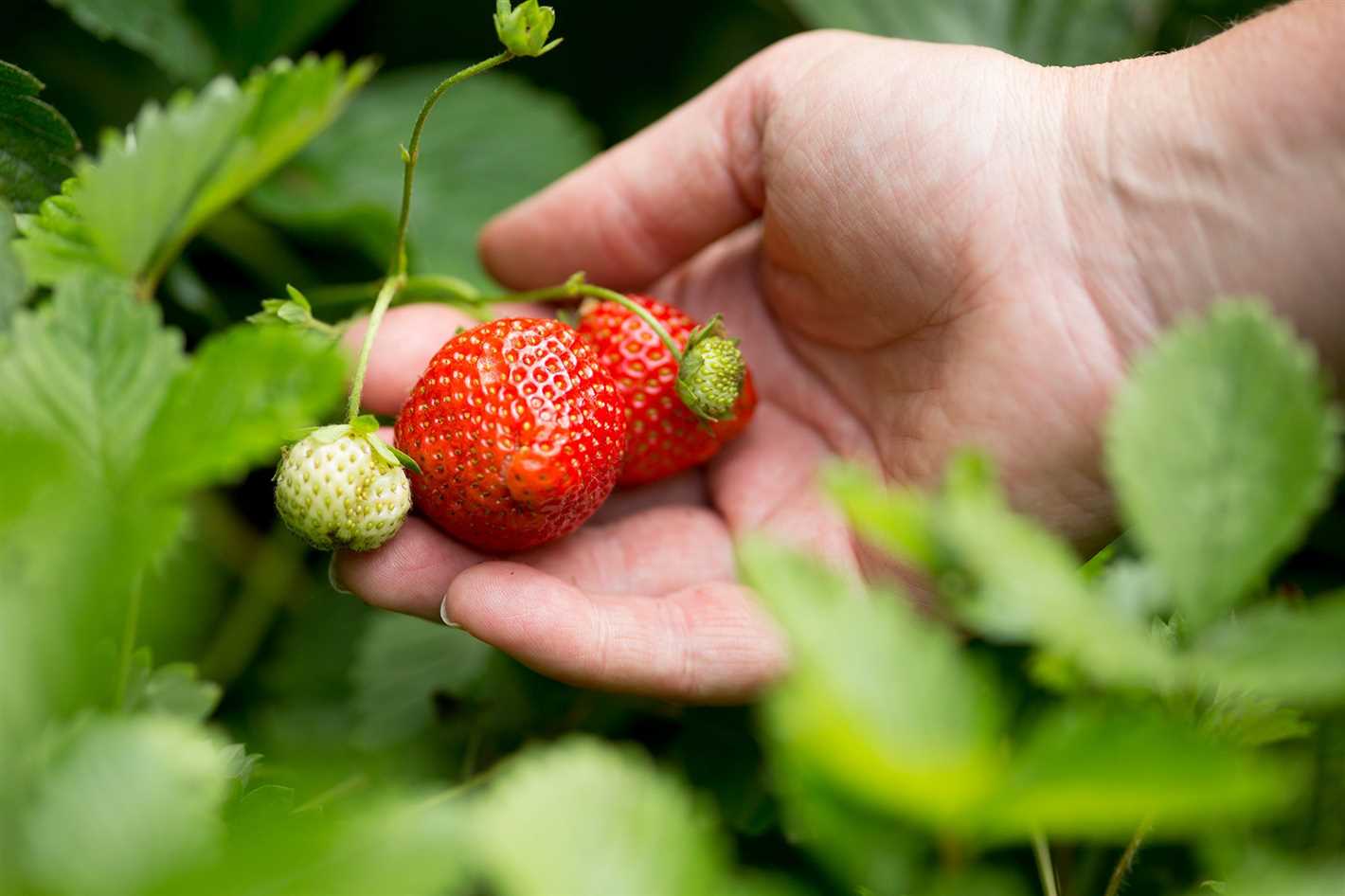
Vigilance is key to preventing pest and disease issues in August. Inspect your plants regularly for signs of pests like aphids, slugs, and snails. Remove any damaged or diseased leaves to minimize the risk of spreading infections. Consider using organic pest control methods such as insecticidal soap or natural predators like ladybugs. Taking preventive measures now will help ensure a healthier crop next year.
6. Winter Protection
As summer comes to an end, it’s essential to prepare your strawberry plants for the upcoming winter. In colder regions, cover your plants with a layer of straw or a frost blanket to protect them from freezing temperatures. This layer also helps insulate the plants and prevents winter damage. Remember to remove the cover in early spring when temperatures start to rise.
Conclusion
By giving your strawberry plants the right care and attention in August, you are setting the stage for a bountiful harvest next year. Removing runners, proper watering, mulching, fertilizing, pest control, and winter protection are all essential steps in ensuring the health and productivity of your strawberry plants. With these measures in place, you can look forward to enjoying a plentiful crop of delicious, homegrown strawberries in the coming season.
Understanding the Importance of August Strawberry Care
August is a critical month for strawberry gardeners as it marks the end of the growing season and the beginning of the preparation for next year’s harvest. It is during this time that strawberries require specific care and attention to ensure the health of the plants and the bountiful harvest in the coming year.
Cleaning and Weeding
One of the essential tasks during August is cleaning and weeding the strawberry patch. Removing any dead leaves, debris, and weeds helps prevent the buildup of pests and diseases. It also improves air circulation around the plants, reducing the risk of fungal infections.
Pruning and Deadheading
Pruning the strawberry plants in August is vital for maintaining their health. Remove any dead or damaged leaves to encourage new growth and prevent the spread of diseases. Additionally, deadheading the strawberry plants by removing faded flowers promotes the growth of new blossoms and improves fruit production.
Watering and Mulching
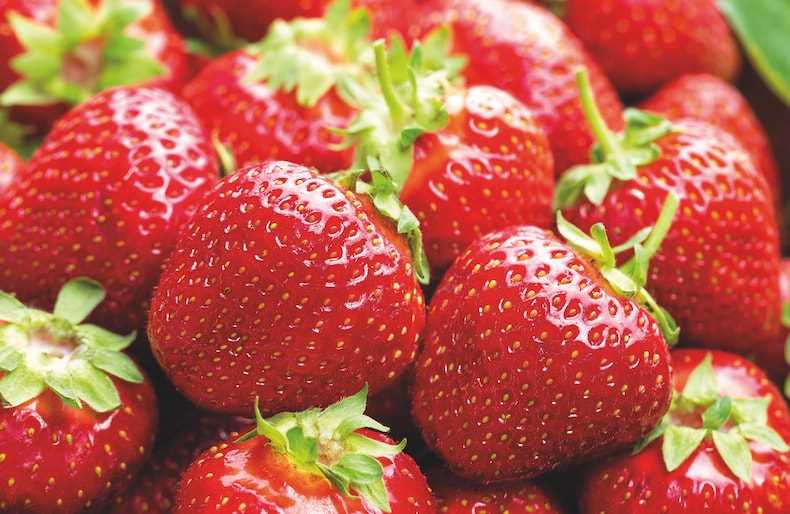
Watering the strawberry plants consistently during August is essential, especially during hot and dry periods. Strawberry plants require regular moisture to thrive and produce abundant fruit. Mulching the soil around the plants with straw or other organic materials helps retain moisture, suppresses weed growth, and protects the strawberries from direct contact with the soil, reducing the risk of rot and disease.
Fertilization
August is also the time to fertilize the strawberry plants to provide them with the necessary nutrients for growth and fruit development. Use a balanced fertilizer or one specifically formulated for strawberries, following the manufacturer’s instructions for application rates.
Pest and Disease Management
Vigilant pest and disease management is crucial in August to prevent infestations and infections that can harm the strawberry plants. Regularly inspect the plants for signs of pests such as aphids, slugs, and mites, and promptly take appropriate action to control them. Additionally, monitor the plants for diseases like powdery mildew, gray mold, and strawberry leaf spot, and apply appropriate fungicides if necessary.
Planning for Next Year
While caring for the strawberry plants in August, it is also essential to make plans for the upcoming season. Evaluate the performance of different varieties, consider soil amendments or adjustments, and plan the layout of the next year’s strawberry patch. Proper planning during this time can help ensure a more successful harvest next year.
By understanding the importance of August strawberry care and implementing the necessary tasks, gardeners can set the stage for a bountiful strawberry harvest in the coming year.
Evaluating the Soil and Nutritional Needs of Strawberries in August
Importance of Soil and Nutritional Evaluation
As August arrives, it is crucial to evaluate the soil and nutritional needs of strawberries to ensure a bountiful harvest next year. This evaluation will help determine if the soil has the proper nutrients to support the growth of healthy strawberry plants. Adequate nutrition is essential for the development of strong root systems and the production of high-quality berries.
Testing Soil pH
One important aspect of evaluating the soil is testing its pH level. Strawberries prefer slightly acidic soil, with a pH range between 5.5 and 7.0. A pH level outside this range can hinder nutrient absorption and affect plant growth.
To test the soil pH, you can use a soil testing kit or send a soil sample to a lab for analysis. If the pH is too high, adding elemental sulfur can help lower it. Conversely, if the pH is too low, applying agricultural lime can raise it to the desired range.
Assessing Nutrient Levels
In addition to pH, it is important to assess the nutrient levels in the soil. Strawberries have specific nutritional requirements, including nitrogen, phosphorus, and potassium.
Analyze the soil’s nutrient content by performing a soil fertility test. This will indicate the availability of essential nutrients and help determine if any amendments are needed. The test results will provide information on the current levels of nitrogen, phosphorus, and potassium, as well as other macronutrients and micronutrients.
Applying Fertilizers
Based on the soil nutrient analysis, you can determine if additional fertilizers are necessary. Fertilizers can supplement the soil with the required nutrients and optimize the growth of strawberry plants. Choose a fertilizer specifically formulated for strawberries or use a balanced fertilizer with a ratio of nitrogen (N), phosphorus (P), and potassium (K).
Follow the recommended application rates and timing instructions on the fertilizer packaging. It is crucial not to over-fertilize, as this can lead to nutrient imbalances or environmental pollution.
Considerations for Organic Growing
If you practice organic gardening, consider using organic fertilizers and soil amendments. Organic options include compost, well-decomposed manure, and natural mineral sources. These organic materials can improve soil structure, add beneficial microorganisms, and enhance nutrient availability over time.
Conclusion
By evaluating the soil pH and nutrient levels in August, you can ensure that your strawberries have the optimal conditions for growth and development. Testing the soil and applying necessary fertilizers will help ensure a bountiful harvest of delicious strawberries next year.
Pruning and Removing Runners: Key Steps for August Strawberry Care
August is an important month for strawberry care, as it is the time when you need to focus on pruning and removing runners. These tasks are crucial for ensuring a bountiful harvest next year. Here are the key steps to follow:
1. Pruning:
Pruning is essential for maintaining the health and productivity of your strawberry plants. Follow these steps:
- Start by removing any dead or diseased leaves or stems. This helps prevent the spread of diseases and pests.
- Trim back the foliage to about 2-3 inches above the crowns of the plants. This helps stimulate new growth and prevents the plants from becoming overcrowded.
- Remove any excessive runners or weak branches to redirect the plant’s energy towards producing larger, more robust fruit.
2. Removing Runners:
Runners are long, thin stems that emerge from the mother plant and produce new plantlets. While they may seem beneficial for increasing strawberry production, too many runners can overtake the garden and lead to smaller, less flavorful berries. Here’s what you should do:
- Identify the runners by their long, slender stems and small plantlets at the end.
- Carefully cut or pinch off the runners as close to the main plant as possible. Be sure to remove them from the garden to prevent re-rooting.
- Focus on keeping only a few well-spaced runners to propagate new plants for next year’s crop.
By pruning and removing runners in August, you are giving your strawberry plants the best chance to thrive and produce an abundant harvest next year. Remember to dispose of any trimmings properly and maintain a clean garden environment to minimize the risk of diseases and pests.
Managing Watering and Irrigation in August for Strawberry Success
1. Monitor Soil Moisture Levels
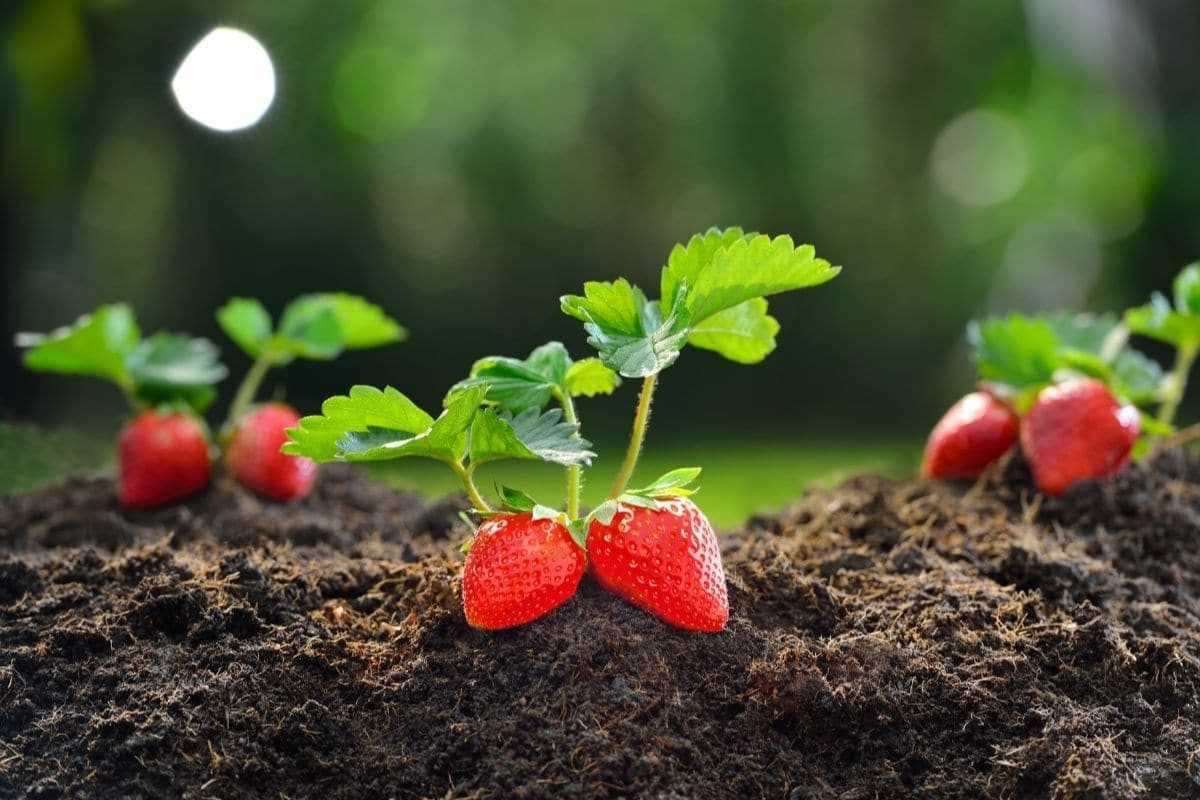
During the month of August, it is important to closely monitor the soil moisture levels in your strawberry patch. Strawberries require consistent moisture to develop and ripen properly, but overwatering can lead to root rot and other diseases. Use a moisture meter or simply dig down a few inches into the soil to determine if irrigation is needed.
2. Watering Frequency
- Water your strawberry plants deeply and thoroughly, ensuring that the water reaches their root zone. This helps encourage strong root growth.
- In August, strawberries typically require an inch of water per week. However, adjust this amount depending on weather conditions.
- During hot and dry periods, you may need to increase the frequency of watering to prevent the soil from drying out.
- Consider watering early in the morning or late in the evening to minimize evaporation and allow foliage to dry before nightfall, reducing the risk of fungal diseases.
3. Irrigation Methods
Various irrigation methods can be used for strawberries, depending on your garden setup and personal preference. The key is to deliver water directly to the root zone of the plants.
- Drip irrigation: This method delivers water directly to the soil around the base of each plant, minimizing water waste and reducing the risk of fungal diseases.
- Soaker hoses: Similar to drip irrigation, soaker hoses slowly release water along their length, soaking the soil around the plants. This method is inexpensive and effective for small-scale gardens.
- Sprinklers: While not as efficient as drip irrigation or soaker hoses, sprinklers can be effective if used correctly. Water the plants evenly without soaking the foliage, as wet leaves can promote fungal diseases.
4. Mulching
Applying a layer of mulch around your strawberry plants helps retain soil moisture, reduce weed competition, and regulate soil temperature. This can significantly reduce the amount of watering needed in August. Organic mulch, such as straw or pine needles, is ideal for strawberries.
5. Rainwater Harvesting
If possible, consider collecting and using rainwater for watering your strawberry plants. Rainwater is free of chemicals and is generally more beneficial for the plants compared to tap water. Install rain barrels or other water harvesting systems to make the most of natural precipitation.
6. Regular Inspection
Regularly inspect your strawberry plants for signs of stress, such as wilting or yellowing leaves. Adjust your watering and irrigation practices accordingly to ensure the plants receive adequate moisture.
Note: It is essential to strike a balance with watering and irrigation to prevent diseases and ensure healthy strawberry plants. Adjust your watering regimen based on your localized climate and the specific needs of your strawberry variety.
Protecting Strawberries from Pests and Diseases in August
August is a critical time for protecting strawberries from pests and diseases. Here are some important steps you can take to ensure a healthy and bountiful harvest next year:
1. Monitor for pest infestation
Regularly inspect your strawberry plants for signs of pests such as aphids, slugs, snails, and spider mites. Look for wilted or yellowing leaves, damaged fruits, or any insect presence. If you spot any pests, take immediate action to control their population.
2. Use organic pest control methods
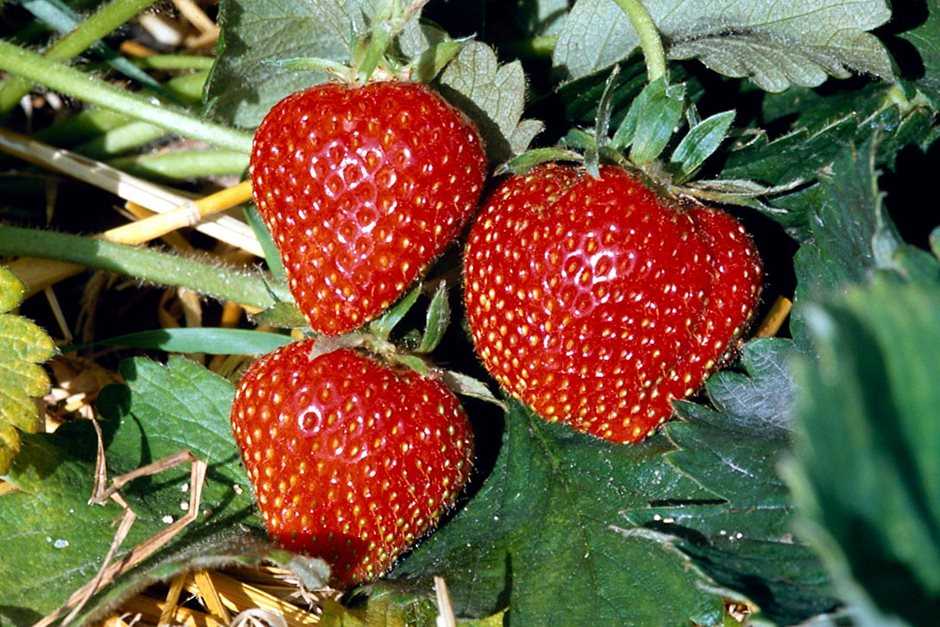
Avoid using chemical pesticides on your strawberry plants, as they can be harmful to both the environment and your health. Instead, opt for organic pest control methods such as companion planting, which involves growing plants that repel pests around your strawberries.
3. Practice crop rotation
Rotate your strawberry plants with other crops each year to prevent the buildup of pests and diseases in the soil. This will also help maintain the fertility of the soil and reduce the risk of nutrient deficiencies.
4. Water properly
Strawberries require regular and consistent watering, especially during hot summer months. However, be careful not to overwater as excessive moisture can create favorable conditions for disease development. Water at the base of the plants early in the morning to minimize the risk of fungal diseases.
5. Mulch
Apply a layer of organic mulch around your strawberry plants to help suppress weeds and retain soil moisture. This will also provide a barrier between the fruits and the soil, reducing the risk of diseases such as gray mold.
6. Remove and dispose of diseased plants
If you notice any strawberry plants showing signs of disease, such as leaf spots or powdery mildew, remove and dispose of them immediately. This will prevent the disease from spreading to healthy plants.
7. Provide good air circulation
Ensure that your strawberry plants have good air circulation by spacing them properly and removing any weeds or debris around them. Good air circulation helps prevent the development of fungal diseases.
8. Check for signs of fruit rot
Regularly check your ripening strawberries for signs of fruit rot, such as soft spots or mold. If you spot any affected berries, remove them promptly to prevent the spread of the disease.
9. Regularly fertilize
Feed your strawberry plants with a balanced organic fertilizer throughout the growing season to ensure they receive adequate nutrients. This will help promote vigorous growth and improve their ability to resist pests and diseases.
10. Keep records
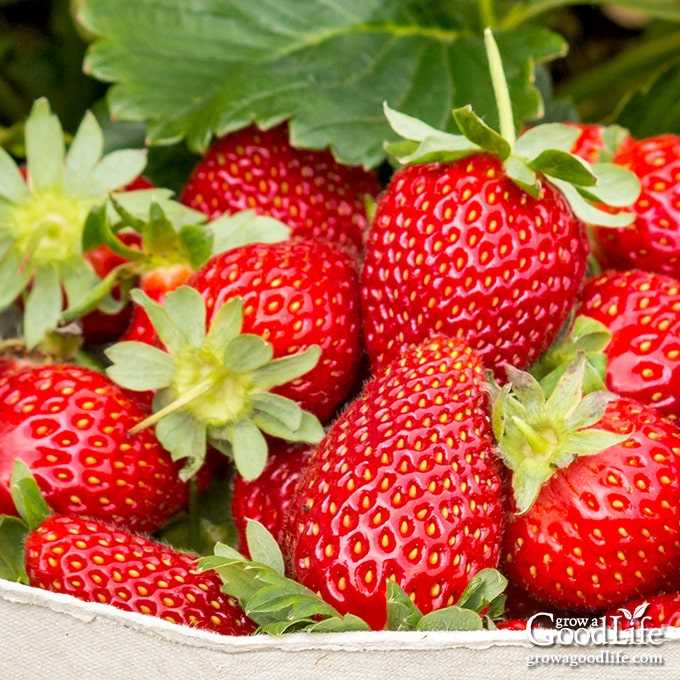
Maintain a record of the pests and diseases you encounter, as well as the methods you use to control them. This will help you track the effectiveness of your strategies and make informed decisions for future growing seasons.
By following these preventative measures and consistently monitoring your strawberry plants, you can protect them from pests and diseases in August, setting the stage for a successful harvest next year.
Harvesting and Preserving Strawberries in August for Year-Round Enjoyment
Harvesting Strawberries
August is the peak of strawberry season, and it’s the perfect time to enjoy these juicy and sweet fruits. Here are some tips for harvesting strawberries:
- Choose strawberries that are fully ripe and have a deep red color. They should be firm but not overly soft.
- Gently grasp the stem of the strawberry and pull it upwards with a twisting motion to detach it from the plant. Avoid pulling the green cap off the strawberry, as it can cause them to rot more quickly.
- Harvest strawberries in the morning when they are cool and the flavor is at its peak.
- Handle strawberries with care to prevent bruising. Place them in a shallow container or basket to avoid crushing the delicate fruits.
Preserving Strawberries
If you have more strawberries than you can eat, preserving them is a great way to enjoy their flavor throughout the year. Here are some methods for preserving strawberries:
Freezing
- Wash the strawberries gently and remove the stems.
- Spread the strawberries in a single layer on a baking sheet lined with parchment paper.
- Place the baking sheet in the freezer for a few hours until the strawberries are frozen solid.
- Transfer the frozen strawberries to airtight containers or freezer bags. Label them with the date and store them in the freezer.
Dehydrating
- Wash the strawberries gently and remove the stems.
- Slice the strawberries into thin, even slices.
- Place the strawberry slices on a dehydrator tray or a baking sheet lined with parchment paper.
- Leave the strawberries to dehydrate at a low temperature (around 115°F or 46°C) for 8 to 12 hours, or until they are dry and leathery.
- Store the dehydrated strawberries in airtight containers in a cool, dry place.
Preserves and Jams
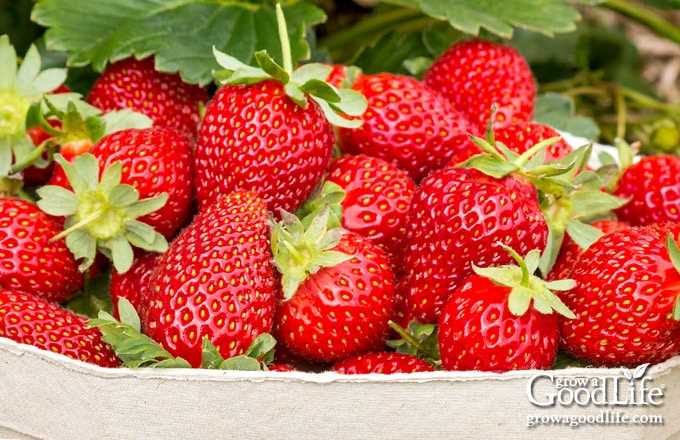
- Wash the strawberries gently and remove the stems.
- Crush the strawberries to the desired consistency using a potato masher or fork.
- In a large saucepan, combine the crushed strawberries with sugar and lemon juice. Cook over low heat, stirring frequently, until the mixture thickens.
- Transfer the preserves or jam to sterilized jars, leaving a small headspace. Seal the jars and process them in a boiling water bath for the specified time.
- Store the sealed jars in a cool, dark place for long-term storage.
Enjoying Strawberries All Year
By harvesting and preserving strawberries in August, you can ensure a bountiful supply of these delicious fruits throughout the year. Whether enjoying them frozen in smoothies, dehydrated as a snack, or spread on toast as preserves, you’ll be able to savor the taste of summer even in the coldest months.
Maintaining Proper Mulching and Winter Protection for Strawberry Plants
Mulching and providing winter protection for strawberry plants are crucial steps in ensuring a bountiful harvest next year. Adequate mulching helps to protect the plants from extreme temperature fluctuations, conserve moisture, suppress weed growth, and prevent soil erosion.
Choosing the Right Mulch
When it comes to mulching strawberry plants, there are several options to choose from. Organic materials such as straw, hay, or wood chips are commonly used and provide excellent insulation for the plants. Avoid using materials that are high in nitrogen, such as fresh grass clippings, as they can promote excessive foliage growth instead of fruit production.
Applying Mulch
The best time to apply mulch to strawberry plants is after the first hard frost in the fall. Start by removing any existing weeds and dead leaves from around the plants. Apply a layer of mulch around 2-4 inches thick, making sure to cover the entire root zone of the plant. Leave a small gap around the base of each plant to allow for air circulation and prevent crown rot.
Winter Protection
In addition to mulching, providing winter protection for strawberry plants is essential in colder climates. One option is to place row covers or frost blankets over the plants to protect them from freezing temperatures. These covers can be secured with stakes or weights to prevent them from blowing away. Another option is to use a layer of straw or leaves as additional insulation.
Inspecting and Maintaining Mulch
Throughout the winter months, it is important to regularly inspect the mulch and make any necessary adjustments. Check for signs of excessive moisture, which may lead to rot, and remove any compacted or matted mulch to promote air circulation. It is also a good idea to replenish the mulch if it becomes too thin or starts to decompose.
Uncovering in Spring
Once the threat of frost has passed and temperatures start to rise in the spring, it is time to uncover the strawberry plants. Gently remove the mulch, taking care not to damage the new growth. Leave a thin layer of mulch around the plants to help conserve moisture and prevent weed growth.
By properly mulching and providing winter protection for strawberry plants, you can ensure their survival through the cold months and set the stage for a successful harvest in the following year.
Planning Ahead: Setting Goals and Preparing for Next Year’s Bountiful Strawberry Harvest
As the current strawberry season comes to a close, it’s time to start planning for next year’s bountiful harvest. By setting goals and preparing ahead, you can ensure a successful and abundant crop of strawberries. Here are some steps to take in order to prepare for next year:
1. Evaluate the Current Season
Take the time to evaluate the current season by assessing the strengths and weaknesses of your strawberry plants. Consider factors such as yield, disease resistance, and overall plant health. This evaluation will help you identify areas for improvement and set specific goals for the next growing season.
2. Set Clear Objectives
Set clear objectives for next year’s strawberry harvest. These objectives could include increasing yield, improving berry quality, or implementing sustainable growing practices. Make sure your goals are specific, measurable, achievable, relevant, and time-bound (SMART goals).
3. Plan Crop Rotation
Strawberries are susceptible to various diseases and pests, so it’s important to implement crop rotation. Plan which crops will be planted in the same area next year and make sure that strawberries are not planted in the same location consecutively. This helps prevent the build-up of pathogens and balances nutrient depletion in the soil.
4. Soil Testing and Amendments
Have your soil tested to determine its nutrient content and pH level. Based on the test results, amend the soil accordingly to ensure optimal growing conditions for your strawberry plants. Common amendments include compost, organic fertilizers, and pH adjustments.
5. Weed Control
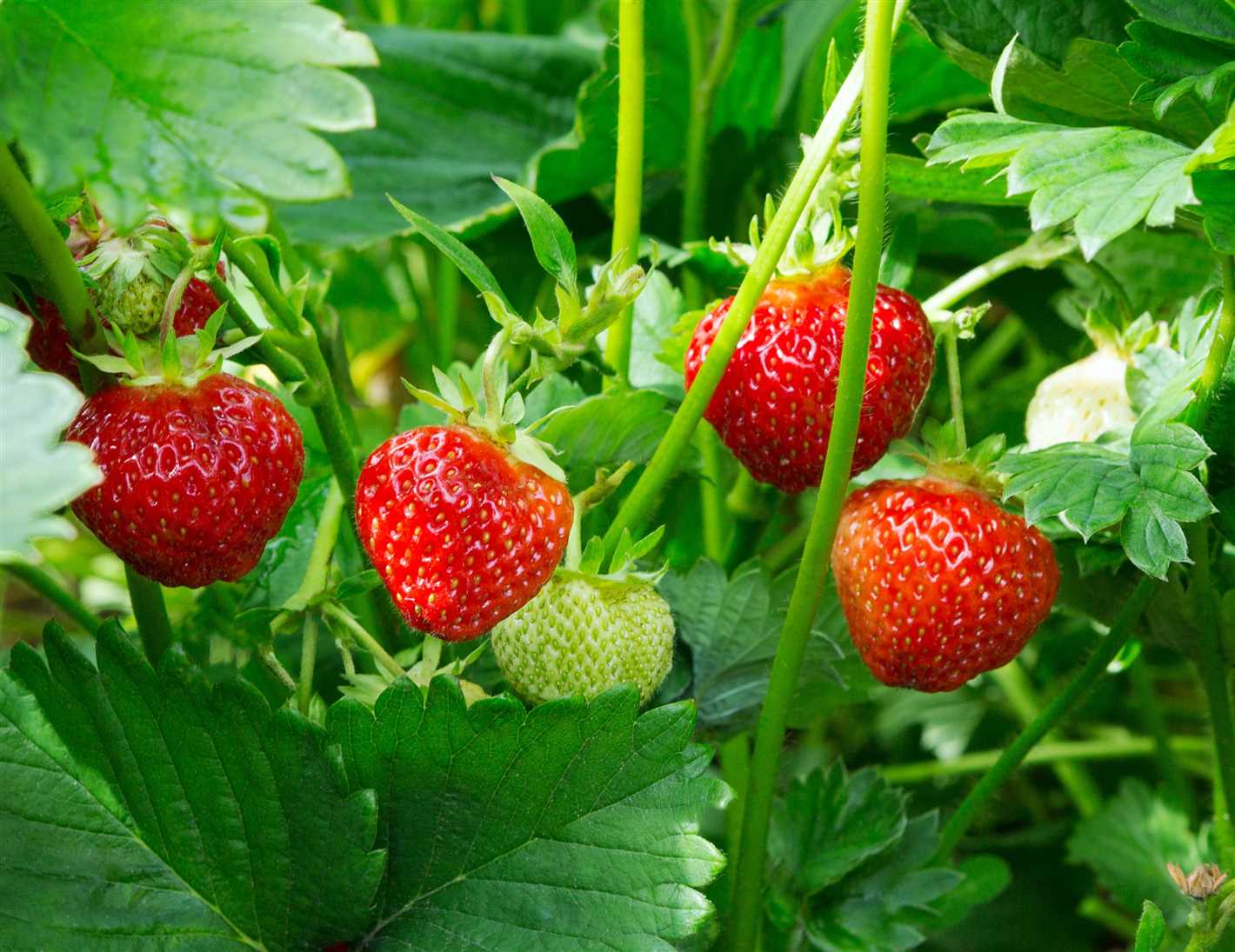
Plan ahead for weed control by implementing effective strategies. This may include mulching, hand-weeding, or using herbicides. By managing weeds properly, you can reduce competition for nutrients and water, leading to healthier strawberry plants and better yields.
6. Irrigation and Water Management
Ensure that you have a dependable irrigation system in place to provide your strawberry plants with adequate water throughout the growing season. Proper water management is crucial for strawberry plant health, berry size, and overall yield.
7. Pest and Disease Management
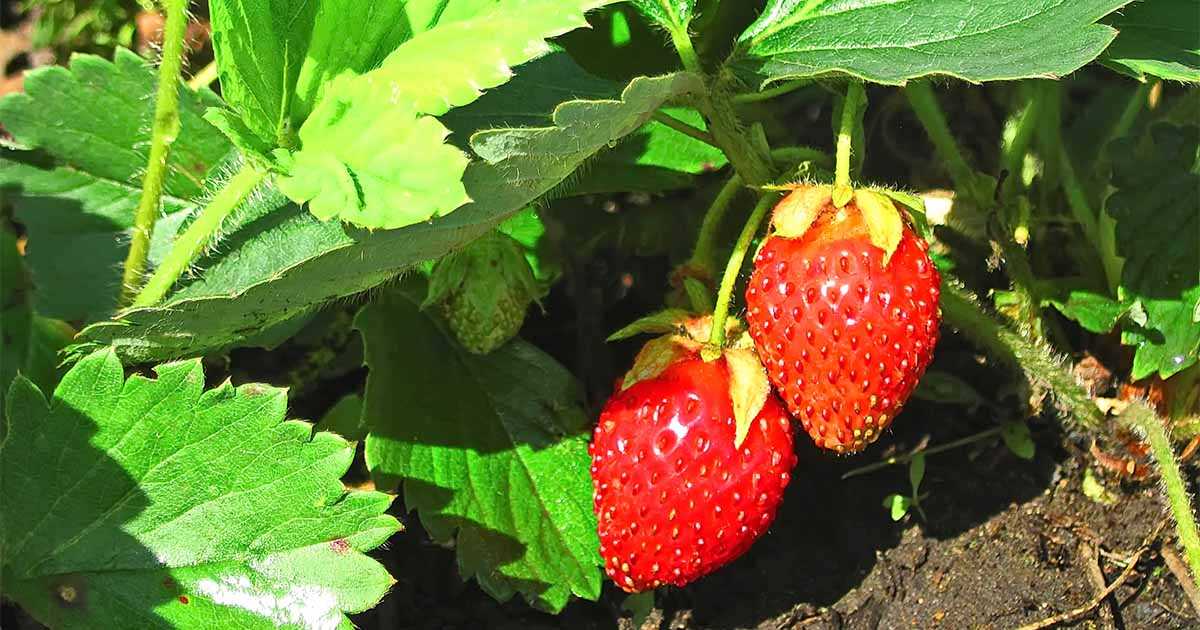
Develop a comprehensive pest and disease management plan to protect your strawberry plants from common threats. This may include scouting for pests, implementing biological controls, using organic insecticides, and maintaining proper sanitation practices.
8. Pruning and Training
Learn proper pruning and training techniques for strawberries to promote healthier plants and improve fruit production. Remove any dead or diseased plant material and train the remaining plants to ensure proper air circulation and sunlight penetration.
9. Record Keeping
Keep detailed records of your strawberry growing activities, including planting dates, fertilization schedules, pest and disease occurrences, and harvest yields. This information will be valuable for future reference and can help you make informed decisions for the next season.
10. Continuous Learning
Stay updated with the latest research and best practices in strawberry cultivation. Attend workshops, conferences, and webinars to expand your knowledge and learn from experienced growers. Continuous learning will help you improve your skills and stay ahead of challenges in strawberry production.
By setting goals, evaluating the current season, and making strategic plans, you can ensure a bountiful strawberry harvest next year. With careful preparation and proper management, your strawberry plants will thrive, resulting in delicious, juicy berries for you to enjoy.
Question-answer:
How do I take care of my strawberry plants in August?
In August, it’s important to provide regular watering to strawberry plants, as they require about an inch of water per week. Mulching around the plants can help retain moisture and prevent weeds from growing. It’s also a good time to remove any runners and old leaves to keep the plants healthy.
Should I fertilize my strawberry plants in August?
Yes, fertilizing strawberry plants in August can help promote healthy growth and abundant fruit production. Using a balanced fertilizer, apply it according to the package instructions to avoid over-fertilization. It’s best to apply the fertilizer after watering the plants.
Can I still plant strawberries in August?
Planting strawberries in August is possible, but it may not be the most ideal time. Strawberries prefer cooler temperatures for establishing their roots. If you decide to plant in August, it’s important to provide proper care such as regular watering and shade during hot periods.
How do I protect my strawberry plants from pests and diseases in August?
In August, it’s important to be vigilant against pests and diseases that can affect strawberry plants. Regularly inspect the plants for signs of pests such as aphids or diseases such as powdery mildew. Applying organic pest control methods and removing any infected plants can help prevent further damage.
What should I do with strawberry plants after harvesting in August?
After harvesting strawberries in August, it’s important to continue providing care to the plants. Remove any remaining fruit, as well as runners and old leaves. Ensure the plants receive regular watering and fertilization to support their growth and prepare for a bountiful harvest next year.







